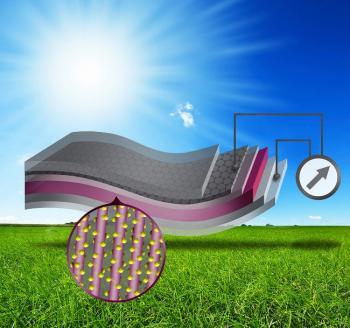Researchers from MIT developed a new solar (photovoltaic) cell that is made from several graphene sheets coated with nanowires. They say that this flexible and transparent cell could be made on the cheap.

The new solar panels use graphene as a replacement for ITO. The new electrode material is cheaper and provides several advantages over ITO: flexibility, low weight, mechanical strength and chemical robustness. The idea is to use a series of polymer coatings to modify the graphene properties, allowing them to bond a layer of zinc oxide nanowires to it, and then an overlay of a material that responds to light wavesâeither lead-sulfide quantum dots or a type of polymer called P3HT. Despite these modifications, graphene's innate properties remain intact.
The team used a solution-based process to deposit the zinc oxide nanowires on the graphene electrodes, which can be done entirely at temperatures below 175 degrees Celsius. This process is highly scalable. The graphene itself is synthesized through CVD and then coated with the polymer layers.
There is a lot of research that involves using graphene in solar panels. In January 2011, MIT themselves publish a paper that details doped graphene as an OPV electrode material. In November 2012 Researchers from Stanford University managed to build a flexible solar cell made entirely from carbon that can provide high performance at a low cost.